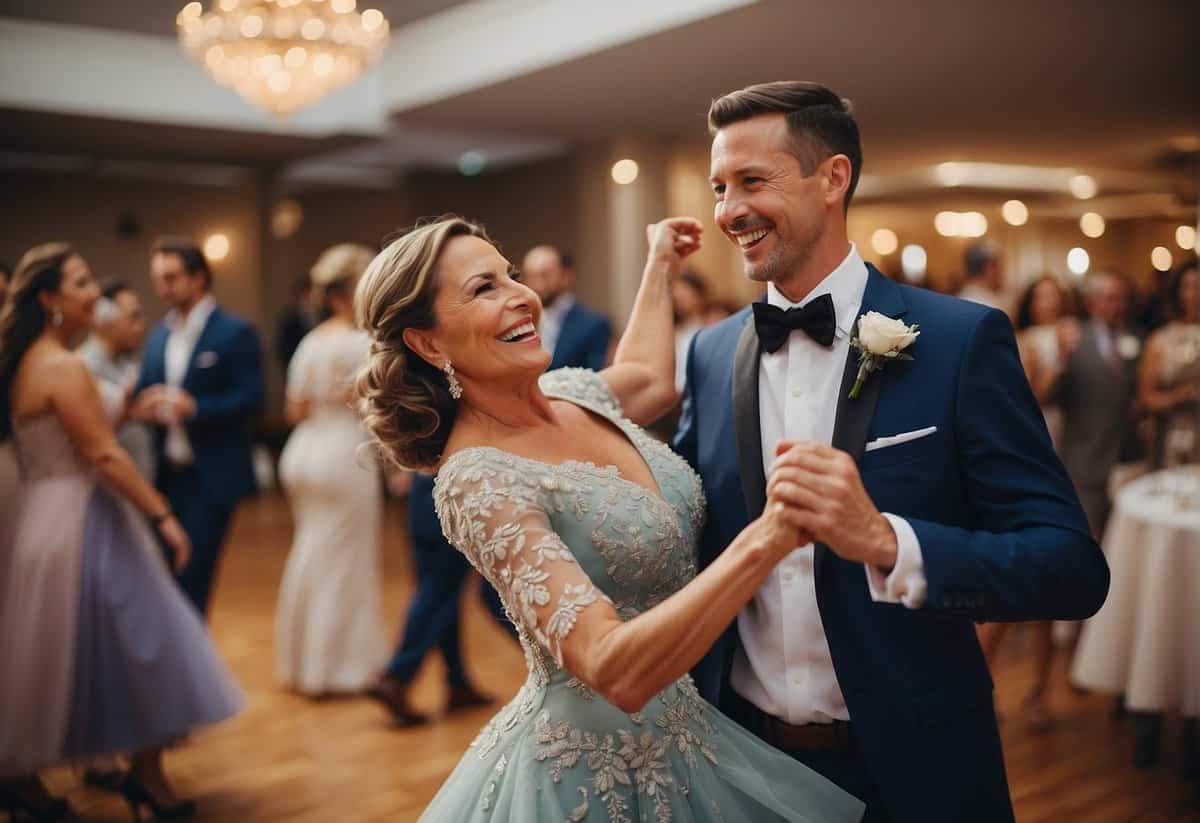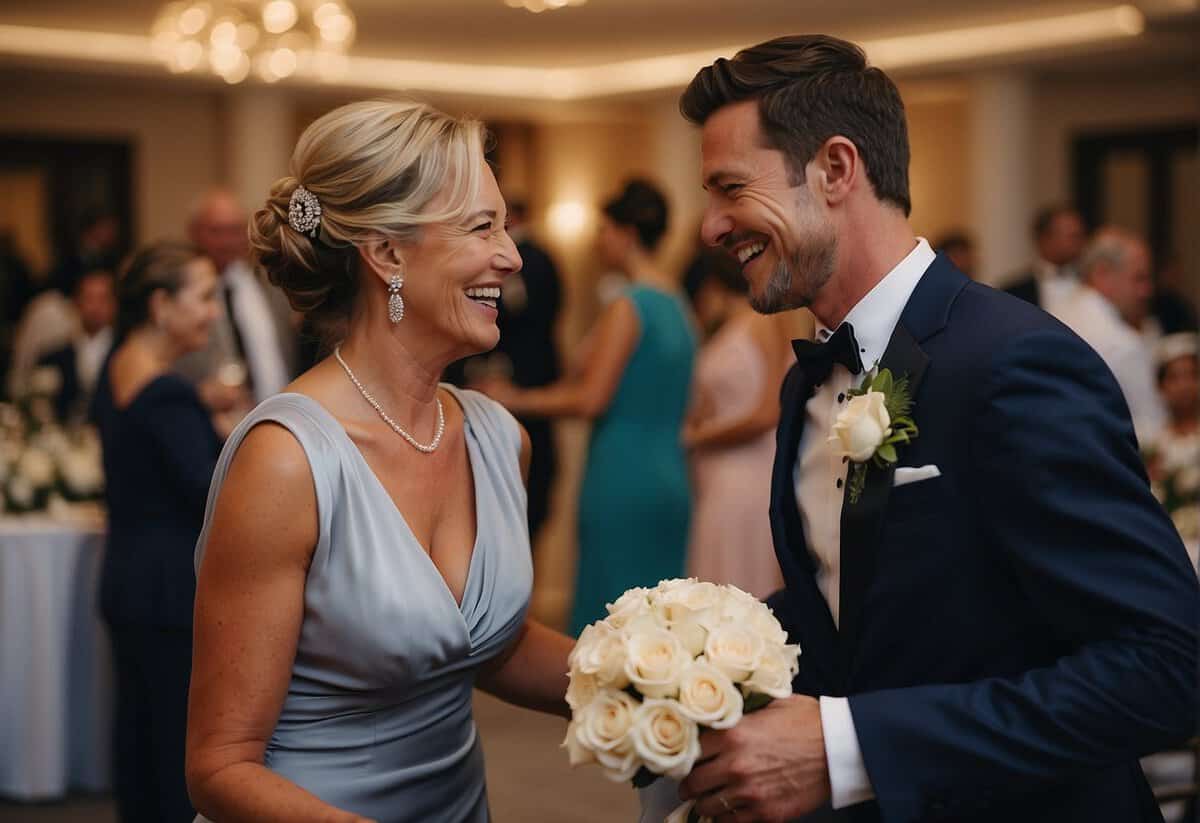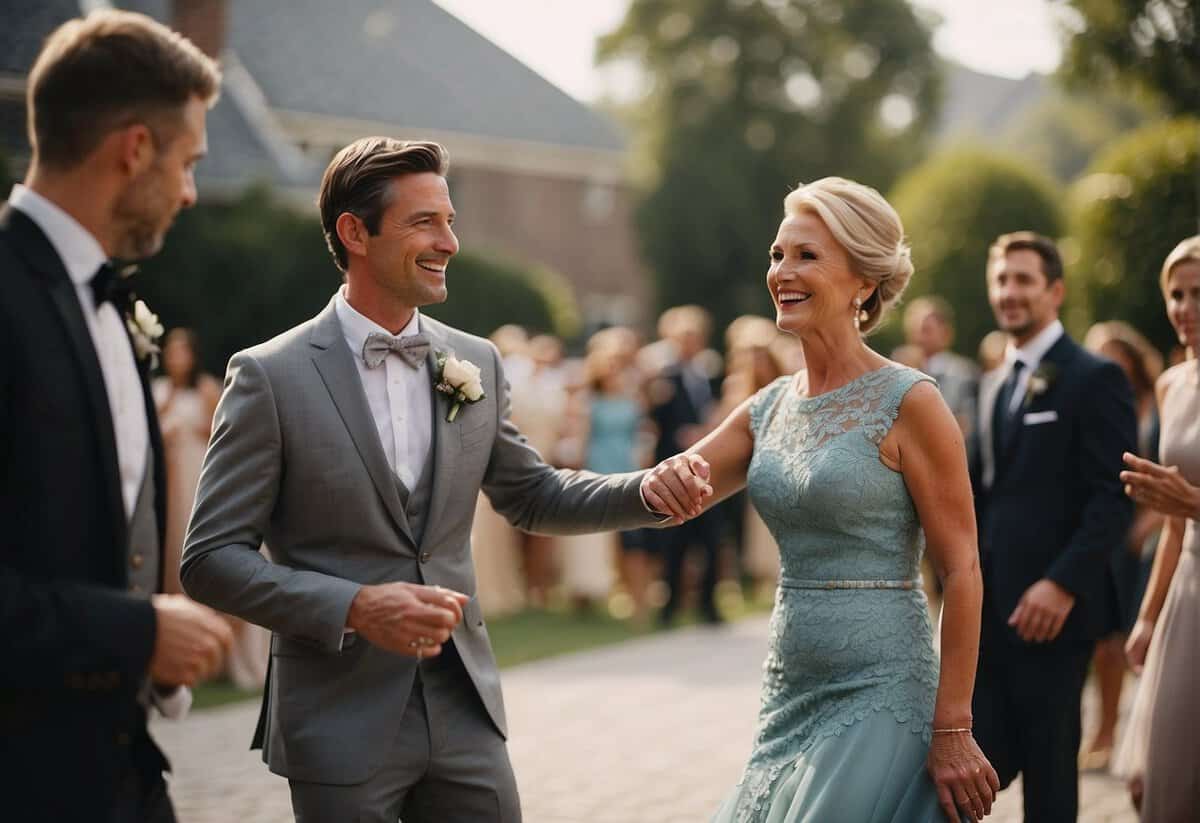Does the Mother of the Bride Dance with the Groom? Traditions and Etiquette Explained
At weddings, the dance floor becomes a stage for some of the event’s most poignant moments. You might be curious whether, among these traditions, the mother of the bride shares a dance with the groom. While it’s common for grooms to dance with their own mothers during the mother-son dance, the tradition involving the mother of the bride is less defined and often depends on personal preference and the specific dynamics of the family involved.

If you’re planning your daughter’s wedding and wonder about your role on the dance floor, rest assured that there’s room for flexibility. Your participation in a dance with the groom not only symbolizes your acceptance and honor of the union but is also a gesture of love and respect toward your daughter and her partner. Deciding whether to have this dance can be based on tradition, your relationship with the groom, the wedding format, and how you feel about taking the spotlight for a brief, shared moment in celebration.
Key Takeaways
- Groom traditionally dances with his mother, not the bride’s.
- Mother’s dance with the groom is a personal choice.
- Dance signifies honor, love, and acceptance of the union.
The Role of the Mother of the Bride

As the wedding day approaches, your role as the mother of the bride is multifaceted, involving support, etiquette, and tradition. You will engage in planning and offer emotional support to ensure the day flows seamlessly from the ceremony to the celebration.
Pre-Wedding Responsibilities
Before the wedding, you’ll find yourself immersed in wedding planning. Your tasks may include:
- Assisting with the wedding registry and tracking of gifts.
- Offering support and advice during dress shopping.
- Hosting or co-hosting the bridal shower and engagement party, while respecting family and religious traditions.
- Possibly contributing to the guest list and helping with venue selection.
Above all, it’s important to maintain a balance, honoring family traditions and customs without overshadowing the couple’s wishes.
Ceremony Participation
On the day of the ceremony:
- You might have a role in the ceremony program, possibly through a reading or involvement in a unity tradition.
- Typically, you will be one of the last to be seated before the bridal party processional, symbolizing your support and presence in your daughter’s life.
- Depending on traditional roles, you may escort or be escorted in the processional.
Maintaining proper etiquette during these moments reflects your respect for the event’s solemnity and significance.
Reception Duties
At the reception, your duties transition into a more celebratory role:
- You might participate in the grand entrance or be featured during special moments such as the traditional mother-son dance.
- Interacting with guests, ensuring they feel welcome, and facilitating introductions between family members can be a vital part of your participation.
Your involvement is key to cultivating unity and a festive spirit at the wedding reception, from the music selection to the farewell.
Understanding Wedding Etiquette

You’re planning a wedding, and amidst the joy and excitement, you want everything to flow smoothly. To ensure that your special day is both memorable and respectful, it’s essential to understand the role etiquette plays. This involves considering the expectations placed on key family members, like the mother of the bride and the groom’s mother, while embracing the blending of two families with their unique traditions.
Mother of the Bride Etiquette
The mother of the bride holds a position of honor in wedding traditions. Her role is to support the bride and help set the tone for the event. Here are a few specific etiquette tips for her:
- Dress: She chooses her outfit before the mother of the groom and shares details regarding the color and formality, as it should complement but not match the bridesmaids’dresses.
- Grand Entrance: Typically, she’s escorted down the aisle during the processional, showcasing her role and precedes the bridal party entrance.
Mother of the Groom Traditions
Traditions for the groom’s mother reflect respect for her and the groom’s family. She has distinct responsibilities:
- Outfit Coordination: After receiving details from the mother of the bride, she selects an ensemble that appropriately matches the day’s formality.
- Reception Duties: The groom’s mother can take part in rounding up guests for the reception and may also be part of the receiving line.
Family traditions might influence whether the mother of the bride dances with the groom. Generally, the focus is on the integration of both families, which is often symbolized by dances between family members, such as the mother-son dance. It’s crucial to communicate with your family to honor any specific practices or preferences.
Navigating Family Dynamics

In the landscape of weddings, the interactions you foster between family members, especially the mother of the bride and mother of the groom, are crucial. It’s about nurturing support systems and respecting family traditions while forming new bonds.
Building Relationships
When your family and your in-laws come together for your wedding, it’s an opportunity to build relationships. Start by involving both the mother of the bride and the mother of the groom in the planning process. For example, consider asking both mothers to collaborate on the guest list or seeking their input on venue selection. This not only honors their roles but also sets a tone of unity and mutual respect. Remember, bonding during wedding preparations can turn your and your partner’s families into a cohesive unit, providing a wealth of support for your new life ahead.
Dealing with Complications
Despite the best efforts, disagreements or complications might arise. If the mother of the bride and the groom find themselves at odds, it’s important to mediate with sensitivity. You could suggest solutions like dividing responsibilities, such as having one mother handle RSVPs while the other works closely with the planner. Strive for clear communication, and don’t be afraid to ask for financial assistance or support from other relatives if tension escalates. Your goal is to reassure both mothers that their contributions are valued, without allowing any conflict to overshadow the joy of the occasion.
Frequently Asked Questions

Wedding dances are a longstanding tradition, embodying both celebration and symbolic gestures. These moments are cherished, often captured in photos and memories that last a lifetime.
What is the typical order of dances at a traditional wedding?
The usual format begins with the bride and groom taking the dance floor, often with a slow dance. Then, other special dances follow, involving the parents and wedding party.
How do wedding traditions dictate the sequence of dances for the bride and groom?
Traditionally, after the bride and groom’s first dance, the parent dances commence, which include the father-daughter and mother-son dances. This often symbolizes the welcoming of a new family member.
At what point in the wedding does the mother-son dance usually take place?
The mother-son dance typically occurs right after the bride and groom’s first dance and following the father-daughter dance, forming part of the wedding’s sequence of dances.
Can you list the different dances that are typically included in wedding celebrations?
Sure. Apart from the bride and groom’s first dance, and the father-daughter and mother-son dances, there are also dances involving the bridal party and sometimes a combined parents’ dance.
What is the father of the bride expected to do during wedding dances?
The father of the bride traditionally shares a dance with his daughter, emphasizing the special bond between them and marking a rite of passage.
In wedding traditions, what is the significance behind the first dance of the newlyweds?
The first dance of the newlyweds is a representation of their union and love, often setting the tone for the rest of the wedding reception. It’s a moment of shared joy and celebration, marking the beginning of their journey together.


